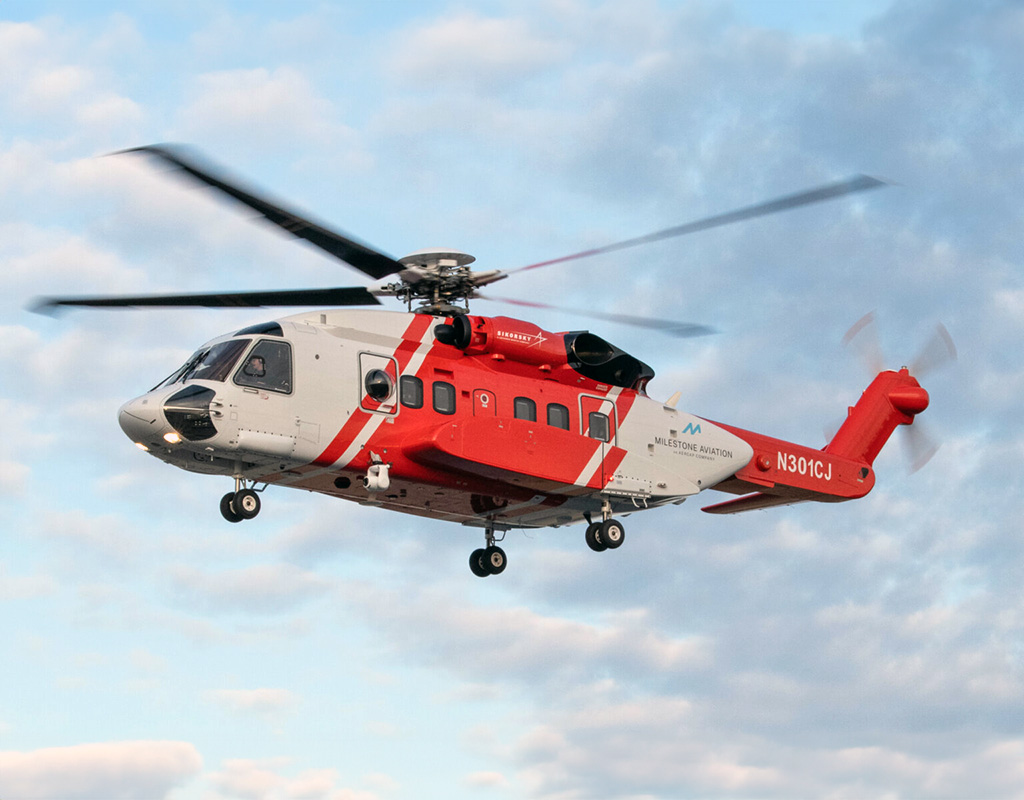
The Vertical Flight Society has announced the 2024 group recipients of its prestigious awards program. Since its establishment in 1944, VFS Awards have paid tribute to the outstanding leaders in the vertical flight community and serve as a catalyst for stimulating technological advances. This year’s winners will be recognized at the Grand Awards Breakfast Banquet on Thursday, May 9, 2024, during VFS’ 80th Annual Forum and Technology Display in Montreal, Quebec, Canada.
“For more than 75 years, VFS has been recognizing the most significant accomplishments in vertical flight,” said VFS executive director Angelo Collins. “This year’s group award winners highlight the incredible capabilities of vertical flight aircraft and those who develop and operated them.”
The Society’s Captain William J. Kossler, USCG Award is given for the greatest achievement in the practical application or operation of vertical flight aircraft, the value of which has been demonstrated by actual service during the preceding 18 months. This year the Kossler Award is presented to British Columbia Wildfire Service – Aviation Division for their historical 48,000 hours of flight time battling the 2023 wildfires.
The Grover E. Bell Award is given for an outstanding research and experimentation contribution to the field of vertical flight development. This year’s recipient is Tiltrotor Aeroelastic Stability Testbed (TRAST) wind tunnel test team for their efforts leading to impactful research in the development and advancing of fundamental understanding of aeroelasticity for next generation tilt rotor aircraft.
Dayton T. Brown is this year’s recipient of the VFS Supplier Excellence Award for their engineering and assembly team’s work on large-scale and complicated test programs for Sikorsky. This award is given to a supplier who, through the quality, innovativeness and cost-effective technology of its products, has made a notable contribution to improving the state of the art of vertical flight aircraft.
The Robert L. Pinckney Award is given in recognition of notable achievement in manufacturing research and development for vertical flight aircraft or components brought to fruition in recent years. This year’s recipient is the Assembly and Flight Operations (AFO) Operator-Assisted Robotic FOD Verification at Sikorsky, a Lockheed Martin Company. The team successfully completed the development of a complex FOD verification solution, comprised of a collaborative-robot-based, operator-initiated autonomous verification system and a handheld Camera on a Stick (COAST) that is operated by represented personnel.
The Harry T. Jensen Award is given for an outstanding contribution to the improvement of reliability, maintainability, safety or logistics support through improved design or technical achievement. This year’s award is given to Sikorsky’s S-92 Tail Rotor Bearing Monitoring team for the development, certification, and fielding of a more capable monitoring system that reduces maintenance and gives vastly increased notification time of potential bearing degradation thereby increasing the reliability, maintainability, and safety of the S-92 helicopter.
The Leonardo International Fellowship Award recognizes significant contributions to international vertical flight cooperation. This year’s winner is the Apache Attack Mission Systems Team. The team designed and developed a mission systems product line that incorporated all domestic and international customer requirements, supports compile- and run-time detection of the Apache configuration, and was fielded for multiple domestic and international customers simultaneously. The overall effort spanned multiple parallel contracts, containing software re-use from Apache Operational Flight Program (OFP) software, Link 16, Data Correlation, Geospatial Embedded Mapping software and Geographic Data Server (GEM/GDS).
This year’s recipient of the Howard Hughes Award, given in recognition of an outstanding improvement in fundamental helicopter technology brought to fruition in the previous 18 months, is Free-Fly CFD-CSD- FCS Modeling and Simulation Development Team for outstanding improvements to the vertical flight modeling and simulation technology and brought it to fruition to support advanced rotorcraft design and flight test.
The Vertical Flight Heritage Sites Program is intended to recognize and help preserve locations with the most noteworthy and significant contributions made in both the theory and practice of helicopter and other VTOL aircraft technology. This year, the Glenn L. Martin Wind Tunnel at the University of Maryland, College Park, has been selected. The wind tunnel has been the site of many tests of vertical takeoff and landing (VTOL) aircraft designs and associated components beginning in the 1950s and continuing to the present. VTOL aircraft include helicopters (tandem and single rotor); jet VTOL; tilt-wing; rotor research; aerodynamic; component drag and stability studies.

